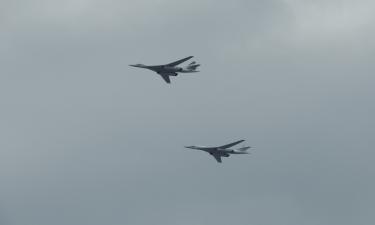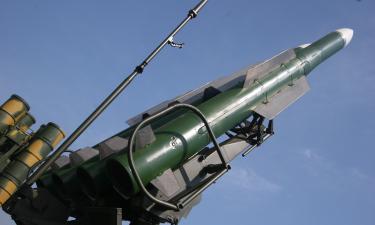Russia To Receive $10 Billion of Profit from Arms Sales Annually
The volume of Russian arms exports has doubled during the recent ten years. In 2000, Russia’s exported arms in the amount of $3.7 billion, whereas the nation’s arms shipments abroad in 2009 reached 8.6 billion. Russia conducts military and technical cooperation with 85 countries of the world.
The above-mentioned numbers were announced February 15 during the meeting between Prime Minister Vladimir Putin, Minister for Trade Viktor Khristenko and the head of the Federal Service for Military and Technical Cooperation Mikhail Dmitriyev.
“It means that we maintain a considerable number of jobs with the help of foreign economic activity. It also provides very good opportunities for modernization and development,” Putin said.
“We should not stop here. One should enter new perspective sales markets, and our recent contracts indicate that,” he added.
The products of the Russian defense industry meet a number of problems on the world market of arms, but the problems must be solved as soon as possible, Putin said.
“There are a lot of questions in this field. It goes about the struggle against counterfeit products – we have to defend our interests on the world market. It touches upon the organization of technical servicing, the supplies of spare parts, and so on. All these problems are connected with the organization of the work of the national defense complex in general. I hope that we will be working on these questions not only on the home market, but on the international arena too,” Putin said.
Indeed, Russia has entered a number of new arms markets during the recent decade. These defense contracts are not about the shipments of military hardware only. For example, a contract to sell a batch of Russian fighter jets to a foreign country stipulates a number of additional contracts to service the planes, conduct scheduled repairs, organize pilot training programs, etc. To put it in a nutshell, a customer finds itself dependent on the seller.
One may recollect the story with Venezuela and its US-made F-16 fighter jets, which the nation had to replace with Russian MiG-29 after its relations with the United States aggravated.
Speaking about counterfeit products in the defense industry, it was China that caused the biggest damage to the Russian defense industry. China copied other countries’ technologies and even managed to organize a sales network for its products. Several other countries follow currently China’s example.
“Second hand” is another factor that hinders the promotion of Russian arms in the world. It is an open secret that post-Soviet countries and former Warsaw Treaty allies export their Soviet-made arms.
Moldavia once sold MiG-29 fighters to the United States and Uragan volley-fire systems to Slovakia. That is why it is vital for Russia to make the technical servicing of its exported weapons more efficient.
Pointing out the meaning of the export of arms, Putin said that it was not only a plain business matter, but a conspicuous aspect of foreign politics. Viktor Khristenko said that the economic crisis affected defense industry enterprises, but the timely effort made the nation’s defense industry stay afloat and achieve a ten-percent increase of production.
Russia’s current order portfolio in the defense industry will let the country receive up to ten billion dollars of profit every year. The total cost of foreign contracts placed with Russian defense enterprises is evaluated at approximately $34 billion.
Subscribe to Pravda.Ru Telegram channel, Facebook, RSS!





